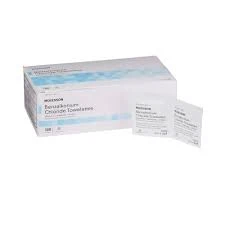poly aluminum chloride
Poly Aluminum Chloride An Overview
Poly Aluminum Chloride (PAC) is a widely utilized coagulant that plays a critical role in the treatment of water, wastewater, and various industrial processes. As an inorganic polymer, PAC is primarily composed of aluminum chloride and exhibits a high degree of effectiveness in clarifying water by removing suspended particles and impurities. Its introduction into water treatment practices has significantly enhanced the quality of potable water and contributed to environmental sustainability.
Composition and Properties of PAC
PAC is manufactured by reacting aluminum hydroxide with hydrochloric acid or by neutralizing aluminum chloride solutions. The resulting product is a basic aluminum chloride with varying degrees of polymerization. This polymeric nature allows PAC to form strong bonds with particulate matter, which facilitates the agglomeration and sedimentation of contaminants. The physical appearance of PAC ranges from a white to yellowish powder or liquid, and its solubility in water aids in its application across different settings.
One of the key properties of PAC is its ability to function effectively over a wide pH range, typically between 5.0 and 9.0, making it suitable for various types of water with differing characteristics. Furthermore, PAC demonstrates a lower dosage requirement compared to traditional coagulants like aluminum sulfate, which not only reduces operational costs but also minimizes the quantity of residual aluminum in treated water.
Applications of PAC
PAC finds extensive use in municipal water treatment, where it is employed to purify drinking water by effectively removing turbidity, color, and organic matter. It has also gained popularity in wastewater treatment, particularly in industrial processes where high levels of suspended solids and pollutants are prevalent. Its ability to flocculate and settle solids quickly improves the efficiency of sedimentation processes, leading to clear effluent discharge.
In addition to water treatment, PAC is employed in various industrial applications. It is used in papermaking for enhanced drainage, in the textile industry for dye fixation, and in oil and gas drilling to clarify drilling fluids. Furthermore, its role in the food industry is noteworthy, where it aids in the clarification of juices and beverages.
poly aluminum chloride

Advantages of Using PAC
The use of PAC in water and wastewater treatment systems offers numerous benefits. Firstly, its effective coagulation properties allow for the removal of a wide range of contaminants, including microorganisms, heavy metals, and organic pollutants. This capability not only strengthens the overall water treatment process but also ensures compliance with stringent environmental regulations.
Additionally, PAC has a reduced tendency to produce residual sludge compared to conventional coagulants. The lower volume of sludge generated simplifies handling and disposal and contributes to cost savings in the long run. The economic viability of PAC is further enhanced by its lower dosage requirements, which leads to reduced transportation and storage costs.
Environmental Considerations
As a coagulant, PAC is recognized for its relatively low environmental impact. Its use minimizes the introduction of harmful substances into the environment, aligning with global sustainability goals. However, it is essential to monitor aluminum levels in treated water to prevent potential toxicity to aquatic life.
Conclusion
In conclusion, Poly Aluminum Chloride is an indispensable tool in modern water treatment and industrial processes. Its effectiveness, economic benefits, and environmental compatibility make it a preferred alternative to traditional coagulants. As water scarcity and pollution continue to rise globally, the role of PAC in ensuring the availability of clean and safe water becomes increasingly crucial. Continued research and development in this area are necessary to further enhance its applications and efficiency, paving the way for a sustainable future in water management.
-
Water Treatment with Flocculant Water TreatmentNewsJun.12,2025
-
Polymaleic AnhydrideNewsJun.12,2025
-
Polyaspartic AcidNewsJun.12,2025
-
Enhance Industrial Processes with IsothiazolinonesNewsJun.12,2025
-
Enhance Industrial Processes with PBTCA SolutionsNewsJun.12,2025
-
Dodecyldimethylbenzylammonium Chloride SolutionsNewsJun.12,2025





